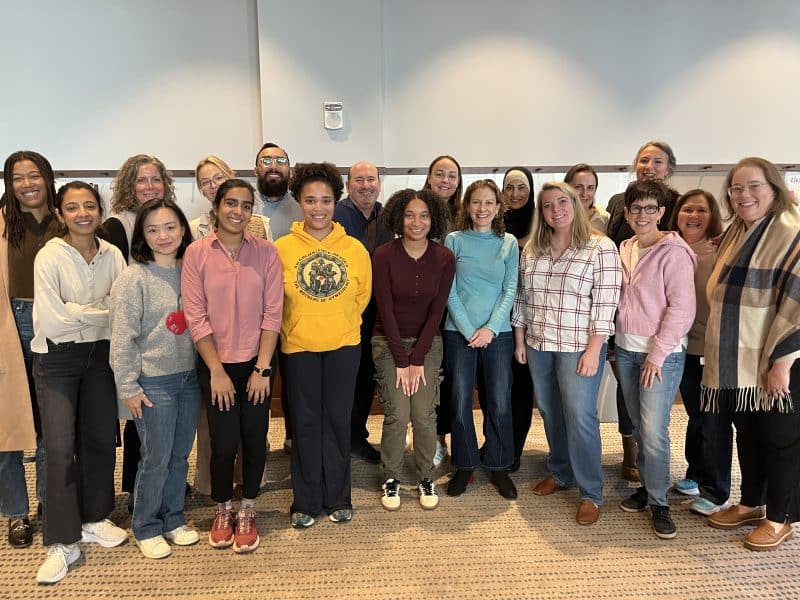Connected Communities zoning proposal elicits substantial public feedback
There were clear divisions: younger speakers tended to favor the proposal, citing housing accessibility and walkability, and older citizens typically voiced opposition.
The Connected Communities zoning proposal for Cincinnati has stoked considerable community interest, as more than 100 people attended a May 17 public meeting on the plan, held in the City Council’s chambers, with many more listening in on Zoom.
The Planning Commission voted to advance the proposed zoning changes, which will loosen regulations to enable “middle housing,” two-to-four family units, as well as relax stipulations for parking-space minimums. The proposal now moves to the full City Council.
Six of the Planning Commission members – Chairperson Byron Stallworth, Vice Chair Jacob Samad, City Manager Sheryl Long, Anne Sesler, John Eby, and Daniella Beltran – voted in support of it. Vice Mayor Jan-Michele Lemon Kearney, who voiced clear reservations about the proposal during the meeting, abstained.
The session began with employees from the city’s planning office making a presentation in favor of the proposal. Mayor Aftab Pureval and Council Members Reggie Harris and Jeff Cramerding, Connected Communities’ most ardent cheerleaders, gave their reasoning that the city’s housing was unaffordable for many would-be residents, with impoverished city residents heavily concentrated in certain areas.
The trio received pushback from Kearney, who wondered why rent control wasn’t part of the proposal’s toolkit for providing more affordable housing. Pureval countered that a city Cincinnati’s size lacked the housing stock to offset subsidized rent with more expensive leases elsewhere.
Two hundred people signed up to make public comments in person and via Zoom. Many couldn’t wait as commissioners allowed every speaker the allotted three minutes, but public comments still spanned more than four hours.
About 60% voiced opposition to the proposal. There were clear divisions: younger speakers tended to favor the proposal, citing housing accessibility and walkability, and older citizens typically voiced opposition. Those aligned with real-estate and public-transit interests supported the measure, whereas an advocate for the homeless (see below) expressed skepticism that a market-driven proposal would adequately address the needs of housing-insecure populations.
Here are quotes or paraphrases of some of the more compelling comments culled from the public-comment phase of the meeting:
“Why is the [Cincinnati Metropolitan Housing Authority] not here? HUD policies have raised payments to landlords 40% for taking those with housing vouchers, which attracts out-of-town investors. There’s a lack of oversight, and relaxing zoning regulations will benefit [real estate investors] even more.”
Don Driehaus, Price Hill
“It’s in our interest to think of the future. Throughout history, successful civilizations have built up before they built out. Creating walkable, sustainable communities will benefit those who live here 100 years from now.”
Charlie Steens, Oakley
Linda Zeigler, a Clifton resident, said the Connected Communities proposal does not support homeownership, and that relaxed regulations would encourage more buying of properties by out-of-town investors and threaten to drop the rate of homeownership in the community to “around 10%.”
“We need greater density and opportunity for younger people and individuals with lower incomes. I started out as a renter in my community, and worked my way up to home ownership. We should not discourage middle housing, and Connected Communities provides this opportunity.”
Wendy O’Neal, Mt. Washington
“We have 46,000 people in Cincinnati who can’t afford a home, and Connected
Communities does nothing to address this. Low-income housing tax credits (LIHTC)
have made minimal impact on helping the housing insecure. Tax abatement caused
Over-the-Rhine to lose 2,300 affordable homes. Without legal requirements, market-driven solutions can’t be relied upon to help this population.”
Josh Spring, executive director, Greater Cincinnati
Homeless Coalition
Nicole Ware, the associate state director for outreach and advocacy for Ohio’s AARP branch, said that greater housing density is as beneficial for senior citizens on limited incomes as it is for young adults.
“If people in Hyde Park are so supportive of Connected Communities, let them be the first ones to receive affordable-housing developments.”
Dawn Johnson, North Avondale
(Note: The Hyde Park Community Council officially voted in opposition to Connected Communities.)
Many making comments complained about a lack of publicity of the city’s engagement sessions. Stallworth stated sharply, “Besides the mayor knocking on everyone’s door personally, I don’t know what more could have been done to make the public aware.” He cited the city’s public communications, and the coverage of Connected Communities among local media.
Whether communication was sufficiently frequent and the process duly transparent
could be fairly debated, but there’s a kernel of truth in Stallworth’s comment. Citizens are best served by taking the initiative in educating themselves and being their own advocates. Solid citizenship requires vigilance by the citizenry.

















